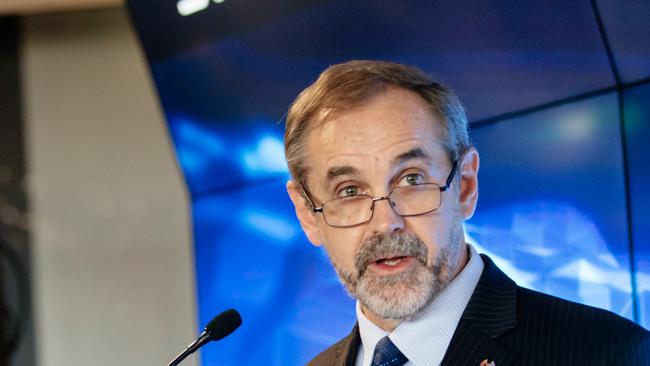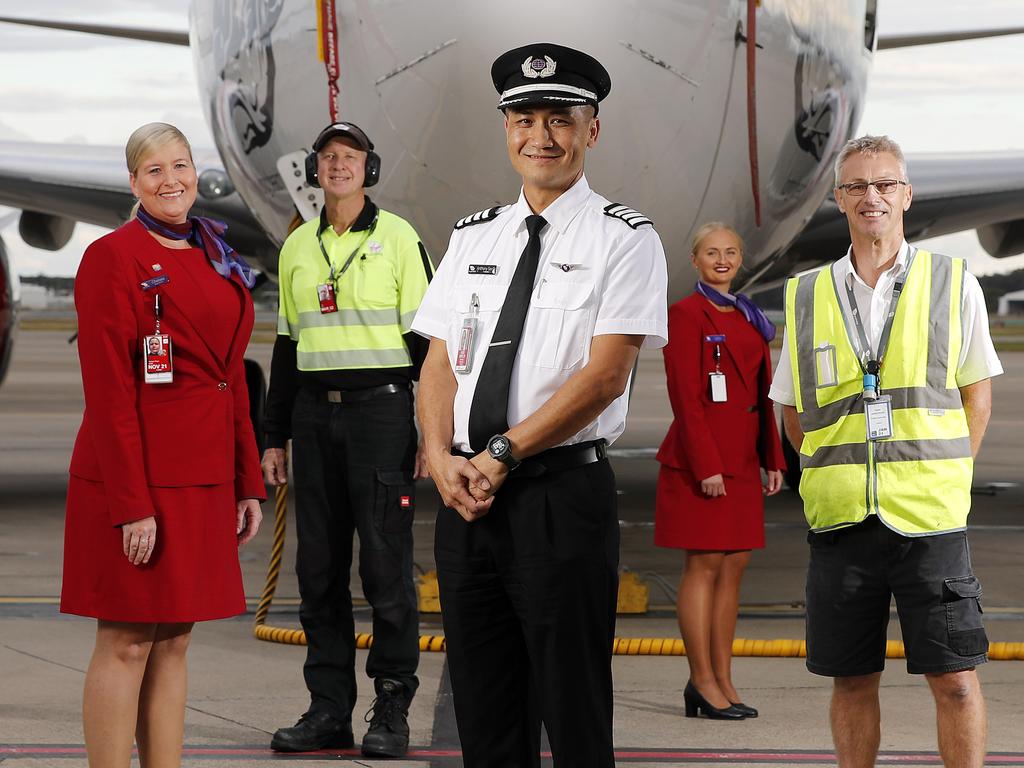Self-defence puts Australia at the forefront of hi-tech innovation

“We’re a bunch of Aussies who are contributing to the security of the nation, but doing that with a strong partnership with our US allies,” says Dr Tony Lindsay, who runs the lab, after a long and stellar career of his own working in defence research for the Australian federal government.
“I still get out of bed in the morning for the same reasons. And that’s important. And you still apply science and technology to defence of Australia’s national interests. I did that for 30 years in the government, and the ability to do that in exactly the same way but from a quite a different perspective, it’s good.”
STELaRLab actually belongs to US defence giant Lockheed Martin. It is no accident that STELaRLab is Lockheed Martin’s first multi-disciplinary lab outside the US, covering everything from submarines to space. The No 1 client is Australia. “We are Lockheed Martin Australia. We work to the needs and requirements of the Australian Defence organisation,” explains Lindsay. “But in doing that, we have a partner in Lockheed Martin, so I can hopefully solve some challenging gnarly types of problems for the Australian defence organisation wisely, spending tax payer’s dollars wisely, but leveraging the smarts of that other 49,000 scientists and engineers in the organisation.”
From the famous Skunkworks aerospace lab that invented Stealth, to the Advance technology labs in darkest space, Lindsay has privileged access.
Events in the past 12 months have been a wake call on national security: China’s growing strategic influence in our region; the Australian government’s preparedness to occupy ‘‘lanes in the road’’ as Ambassador AB Culvahouse puts it, for the US; Australia’s lead role in banning Huawei from 5G and in calling for an investigation into the origins of the pandemic, both of which offended the Middle Kingdom; and then the Prime Minister’s recent warning of a state-based cyber-attack on Australia. It is a time when trusted partners are recognised for what they are.
“The Five Eyes alliance is quite unprecedented in history and the cornerstone of that of course is the US,” says Lindsay. “The ability to safeguard your own nation depends very strongly on your ability just to be able to apply the best R&D and to do that you need to know where the edge is and you need to do that collaboratively. Why did Lockheed choose Australia? The researchers here are very, very good.”
Some of pioneering work done at STELaR feeds directly into war gaming and interoperability. “You’ve got your fifth generation Joint Strike Fighters talking to each other just for a start,” he says. “They’re talking back to the commanders, you’ve got the Aegis systems out there talking to each other and back to the commanders, they’re talking to the Joint Strike Fighters, they’re all talking to the space segment — ‘What do I do next? How do I know what’s going on? How do contextualise it? How do I know what the right decision is?’ All of that is human-driven complex optimisation.”
Space is very much in Tony Lindsay’s remit. And here another tech hub, Lot 14 in South Australia, has this year become home to the new Australian Space Agency. “Right here in the centre of Adelaide, here on Lot 14 we now have people building satellites,” Premier Steven Marshall told me this week. “Inovor already has orders from the CSIRO, the Department of Defence and for the space agency itself. We’ve got real capability here in Australia especially around the nano sat and small sat capability in low earth orbit.” To the Premier, Lot 14 is the most exciting urban renewal project in the country. “What we are seeing there is space, machine learning, defence cyber, all critical areas of that alliance between the US and Australia.”
Increasing threat
When the Prime Minister called Steven Marshall ahead of his public warning on a broadscale cyber attack, the Premier was forearmed. “We have seen a very big increase in the number of cyber attacks, and that threat increase has been coincident with the COVID-19 pandemic. So we are on high alert, we are looking at protecting our data here in South Australia, but the flip side of threat is opportunity and that’s one of the reasons why we’ve invested very heavily to establish the Australian Cyber Collaboration Centre on Lot 14. It’s a ‘Five Eyes and friends’ large commercial range and training academy. This is an area where we’re going to see a lot of jobs created.”
Marshall says interest in the cyber collaboration centre ahead of its opening next month has been so strong that he has had to authorise more money to expand the capacity of the site. “It is one of the fastest-growing opportunities that exist anywhere in the world and we want to really make sure we’re in the centre of that opportunity here in Australia.”
“What’s the next thing?” asks Lindsay. “Artificial intelligence, machine learning. It is developing that trust between the humans and the machines.” In Adelaide, Lockheed Martin has thrown its weight behind the Australian Institute of Machine Learning at Lot 14. Marshall recalls his meeting with Lockheed Martin’s Dan Rice, global vice president for R&D. “I said to him: ‘Adelaide, we’re very proud but tell me about this investment?’ And he said as far as we are concerned, the University of Adelaide ranks in the top three in the world in this area of machine learning that Lockheed Martin are interested in.”
Gone are the days when man worked machine; now there is an information layer that we talk to. “It’s all about trust,” says Tony Lindsay, ‘‘whether it’s us and the alliance or whether it is us with machines. It all comes down to, would I allow that thing to go and execute a task that I myself would prefer to do. If I can trust it to that level, we’re getting somewhere.”
Machine learning
Machines that were developed over the past five to seven years gave us Siri, but Lindsay argues that in research they are a dead end. “Incredibly beautiful technologies that are kind of dumb actually. They optimise statistics in a beautiful way, but they statistically optimise, they don’t really know what they’re doing. We need to teach computers how to learn things, how do you make a computer be as smart as a three-year-old.”
Marshall notes that increasingly, machine learning at Lot 14 is interacting with other areas onsite in space, defence and cyber. Perhaps this is not surprising, given the requirements of smart cities of the future: fitted with sensors to track noise, temperature, car parking or service delivery, much enabled by 5G technology. Perhaps it also explains why Chinese telco Huawei was banned from the 5G build by Australia and most Five Eyes nations.
As to two separate internets, China versus America? “I don’t think it is good for humanity for everybody to go down that path. I think we’d be losing a lot. I do see control of the information layer is critical. Every sovereign state should understand how to do that. But I think people are smart — maybe it’s multiple internets, maybe the internet in 30 seconds is a different internet to 30 seconds ago, self-adapting … that will assist the appropriate use of that resource and its growth.”
Today, Tony Lindsay sees one of his main missions as attracting and training the brightest pre-PhDs before they are picked off by the US tech giants. He talks enthusiastically about the challenges he sets them, like building a drone to check powerlines in outback Australia that could grab on to the lines itself to recharge and fly further.
“We want to steward the next generation of Australians to have the opportunities to do the kind of things that I just loved. And that means have them understand what defence R&D is about, what national security R&D is all about, have the security clearance. The problems you get to see, you won’t see anywhere else, but you’ve got to try and introduce young Australians into that culture, into that business opportunity. Of all the reasons to get out of bed in the morning, applying your skills to the security of the nation is a very good one, I always felt.”







At an undisclosed location on the outskirts of Melbourne’s CBD, some of the country’s biggest brains are wrestling with fiendish problems. The solutions are important both to Australia’s ongoing commercial success and national security. It’s called STELaRLab, or in a mouthful, the Science, Technology, Engineering Leadership, Research Laboratory.